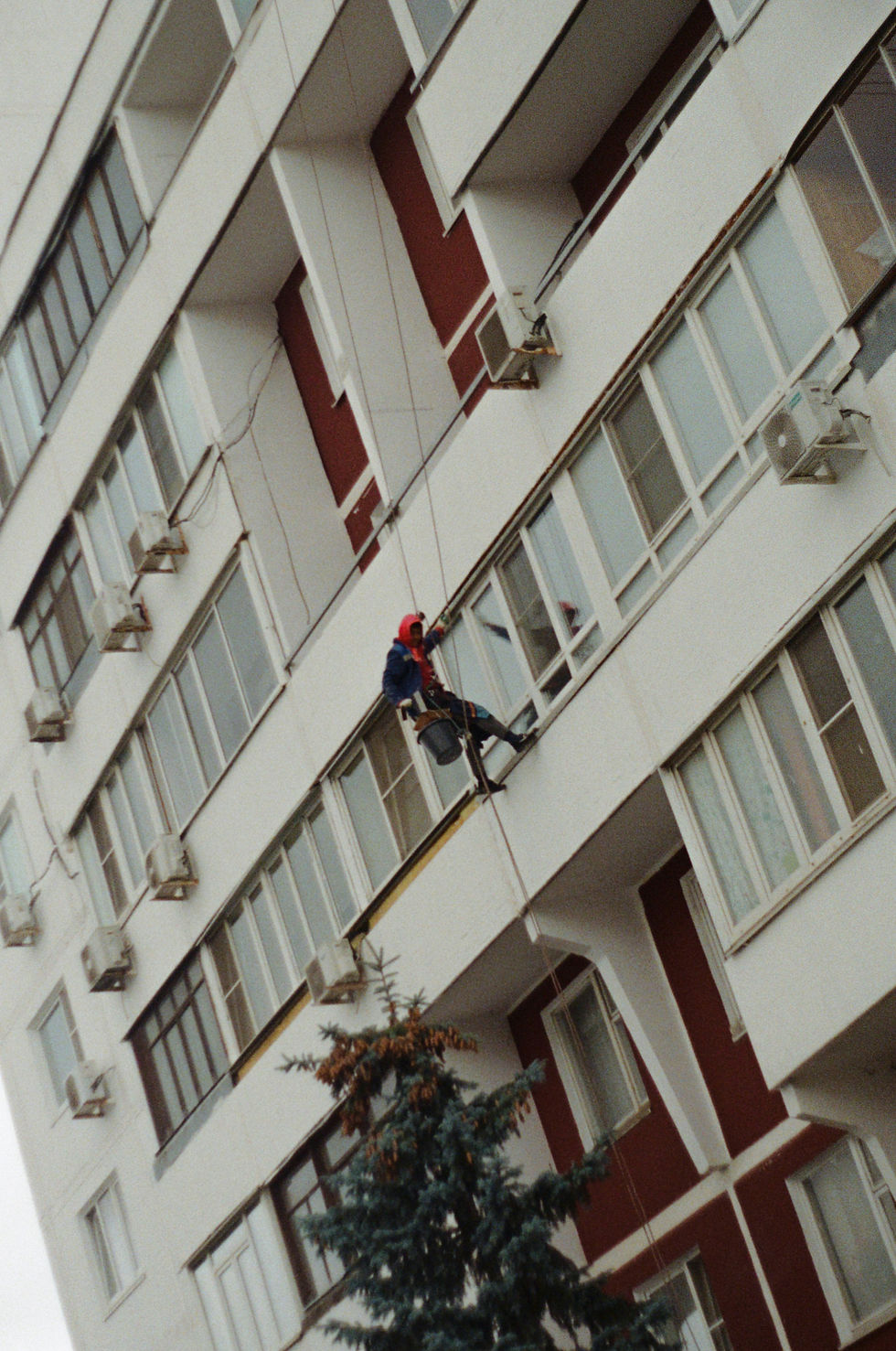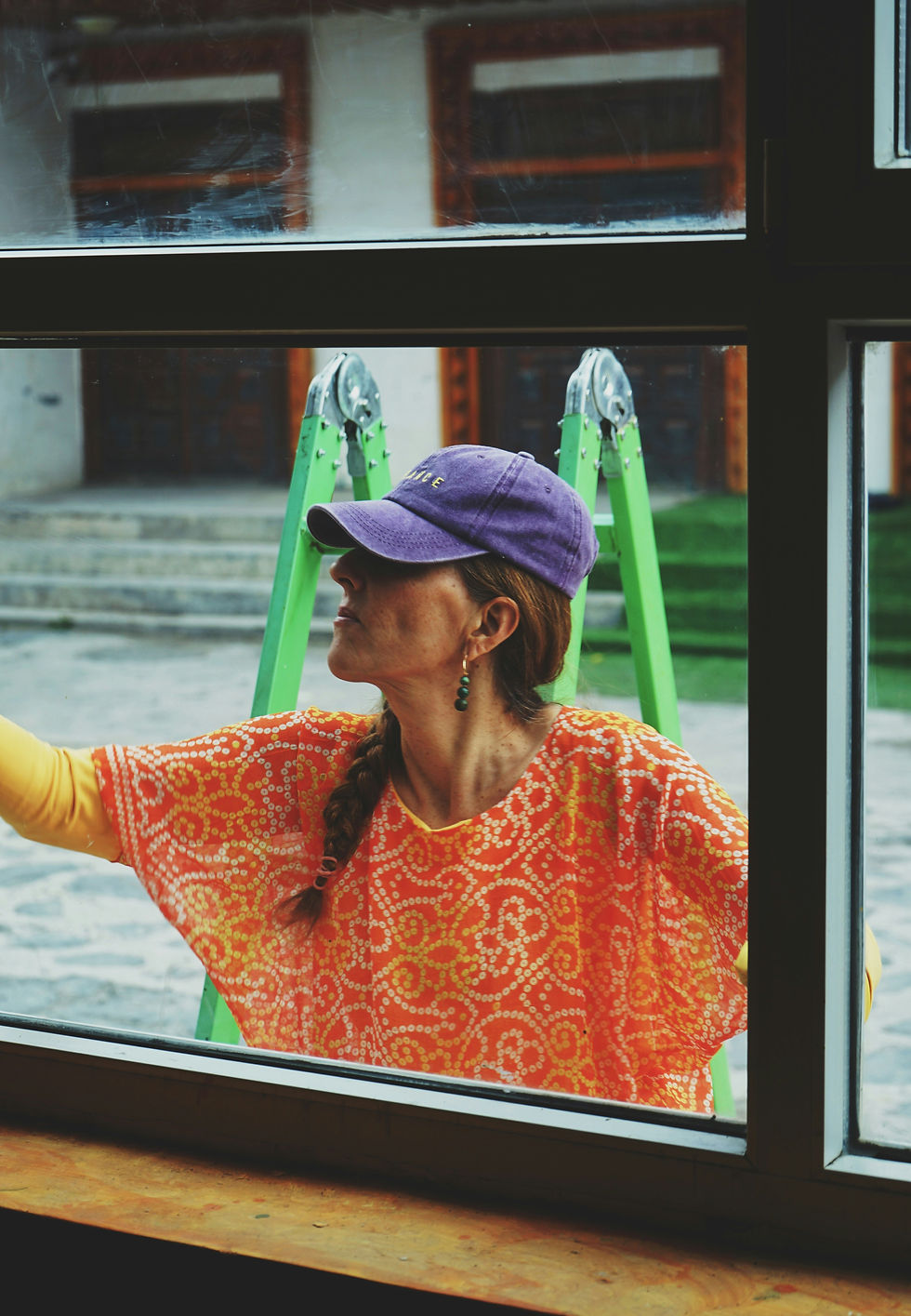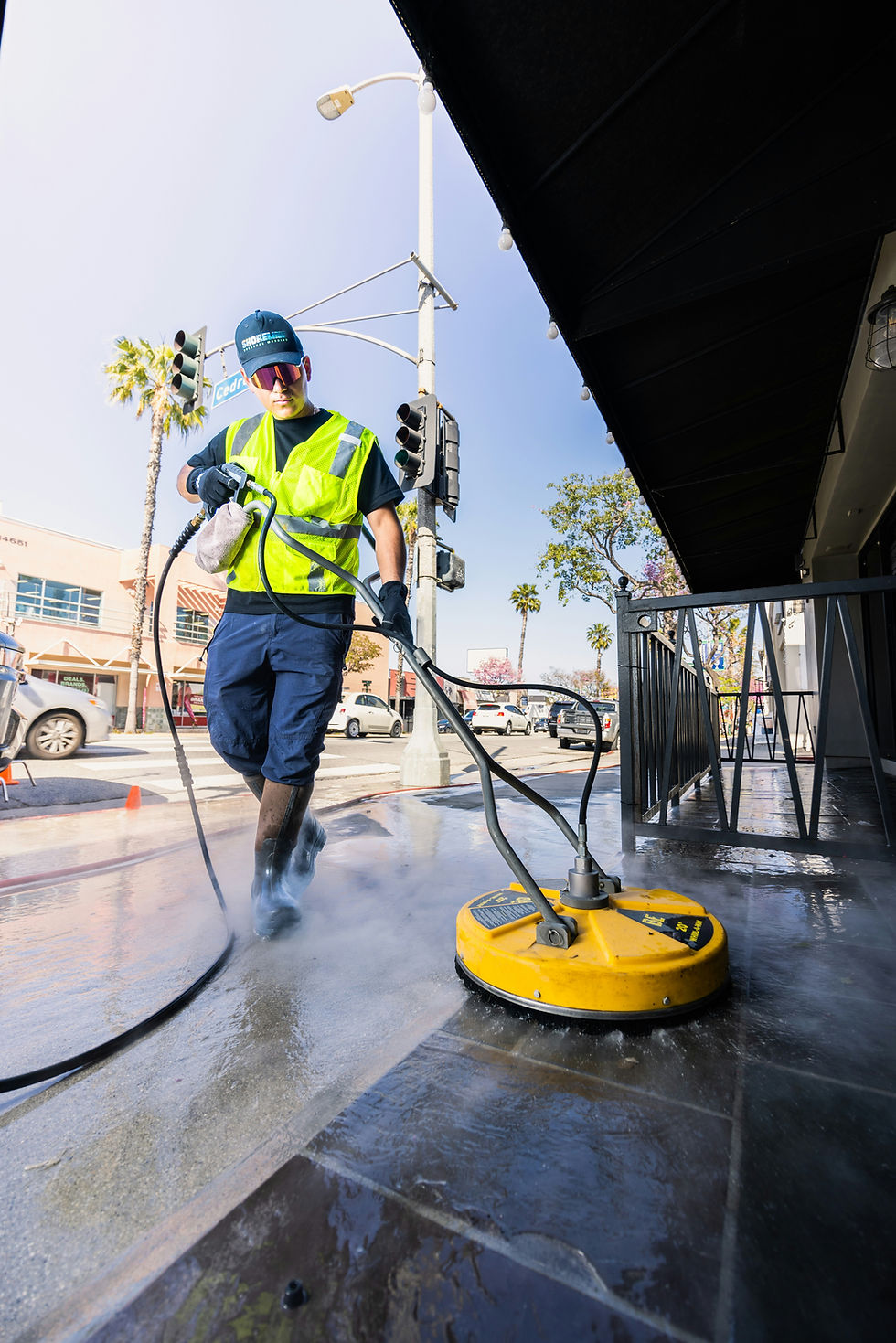The Ultimate Guide to Pressure Washing for Your Home
- Thomas Barrie
- Oct 5
- 5 min read
Introduction to Pressure Washing
What is Pressure Washing?
Pressure washing is a powerful cleaning method that uses high-pressure water spray to remove dirt, grime, mold, mildew, and stains from various surfaces. It’s an effective way to clean driveways, decks, siding, fences, patios, and other exterior areas of your home. Unlike traditional cleaning methods, pressure washing can reach deep into pores and crevices that a standard hose or scrub brush can’t handle.
The process involves using a specialized machine called a pressure washer, which pumps water at a high velocity through a nozzle to blast away buildup. Depending on the surface being cleaned, the water pressure can range from gentle to extremely strong. When used correctly, it restores surfaces to a like-new appearance and helps extend their lifespan.
Pressure washing is not just about aesthetics — it also contributes to your home’s health and safety. By removing algae, mold, and contaminants, it prevents slippery surfaces and keeps your property in top condition year-round.
Benefits of Pressure Washing
Pressure washing offers numerous benefits for homeowners. First, it enhances curb appeal by revitalizing dirty or stained surfaces. Whether you’re preparing to sell your home or just want it to look its best, a freshly cleaned exterior makes a big difference.
Second, it prevents damage caused by mold, mildew, algae, and grime buildup. These contaminants can deteriorate surfaces like wood, concrete, and siding over time, leading to costly repairs. Regular pressure washing helps you protect your investment and maintain structural integrity.
Third, it saves time and effort compared to manual scrubbing. With powerful water pressure, even the toughest stains can be removed quickly. Finally, pressure washing promotes a healthier living environment by eliminating allergens and bacteria that accumulate outdoors.
In short, pressure washing is one of the easiest and most effective ways to maintain the cleanliness, safety, and value of your home.
How Does Pressure Washing Work?
The Pressure Washing Equipment
The main tool in any pressure washing setup is the pressure washer itself — a machine that combines water and power to produce a concentrated jet stream. Most pressure washers have a motor or engine, a high-pressure hose, a water pump, and an adjustable nozzle.
There are two main types of pressure washers: electric and gas-powered. Electric models are typically smaller, quieter, and perfect for lighter household tasks like cleaning cars or patios. Gas-powered machines, on the other hand, deliver higher pressure levels ideal for tougher jobs like concrete driveways and exterior walls.
Accessories such as surface cleaners, extension wands, and detergent injectors can make the process even more efficient, allowing you to target large areas or hard-to-reach spots with ease.
How Pressure is Applied
Pressure washing works by forcing water through a narrow nozzle at a high rate of speed. The intense pressure dislodges dirt, stains, and debris from surfaces without the need for harsh scrubbing. The amount of pressure is measured in PSI (pounds per square inch) — the higher the PSI, the stronger the water force.
Different surfaces require different pressure levels. For example, a wooden deck or vinyl siding needs a lower PSI to prevent damage, while concrete or brick can handle much higher pressure. Proper technique and nozzle selection ensure effective cleaning while protecting your surfaces from wear or erosion.
Common Uses for Pressure Washing
Pressure washing can be applied to a wide variety of surfaces around your home. Some of the most common uses include:
Driveways and sidewalks: Removes oil stains, dirt, and tire marks.
Home exteriors: Cleans siding, brick, and stucco, restoring color and shine.
Decks and patios: Eliminates mildew, moss, and weather buildup.
Fences: Refreshes wooden or vinyl fencing by removing discoloration.
Roofs and gutters: Clears algae and debris that can cause leaks or deterioration.
Outdoor furniture: Keeps seating areas clean and inviting.
Whether for seasonal maintenance or pre-painting preparation, pressure washing delivers fast, visible results that improve both the appearance and longevity of your property.
Safety Tips for Pressure Washing
Personal Protective Equipment
Safety should always come first when using a pressure washer. The water stream is powerful enough to cause injury if mishandled. Always wear personal protective equipment (PPE) such as:
Safety goggles or a face shield to protect your eyes from debris
Non-slip boots to maintain traction on wet surfaces
Gloves to improve grip and protect your hands
Hearing protection when using gas-powered machines
Additionally, keep a safe distance from the surface being cleaned and avoid pointing the nozzle at people, pets, or fragile objects.
Environmental Considerations
While pressure washing is effective, it’s important to do it responsibly. Avoid using harsh chemicals that can harm plants or contaminate waterways. Opt for biodegradable detergents designed for pressure washing when extra cleaning power is needed.
Be mindful of where runoff water flows — block storm drains if possible to prevent pollutants from entering natural water systems. Lastly, schedule your washing during dry, calm weather to prevent overspray and conserve water.
DIY Pressure Washing vs. Hiring a Professional
Advantages of DIY Pressure Washing
Doing your own pressure washing can be satisfying and cost-effective. With the right equipment, you can clean most areas of your property on your own schedule. DIY allows for flexibility — you can target specific areas and adjust pressure levels as needed.
Homeowners who invest in their own pressure washer often find it useful for ongoing maintenance tasks like cleaning vehicles, patios, or outdoor furniture. Plus, learning how to use the equipment safely can build confidence and save money on service fees.
However, DIY requires time, effort, and proper knowledge of safe pressure levels. Mistakes such as using too much pressure or holding the nozzle too close can damage surfaces — so always follow manufacturer guidelines.
When to Hire a Professional
If you’re short on time or facing tough cleaning challenges, hiring a professional pressure washing service is a smart investment. Professionals have commercial-grade equipment, specialized cleaning solutions, and the expertise to handle complex surfaces safely.
They can efficiently clean large areas, remove stubborn stains, and ensure even, streak-free results. Additionally, professional services are insured and experienced, reducing the risk of property damage or personal injury.
Hiring a pro is ideal for cleaning high areas, roofs, multi-story homes, or delicate materials that require expert care. While it costs more upfront, the results are often longer-lasting and more polished.
Conclusion
Pressure washing is an essential part of home maintenance that keeps your property clean, safe, and visually appealing. Whether you choose to do it yourself or hire a professional, understanding how it works and following safety best practices will ensure the best outcome.
With regular pressure washing, you can preserve the beauty and value of your home for years to come — making it a smart and rewarding investment in your property’s longevity.

-Photoroom.png)


Comments